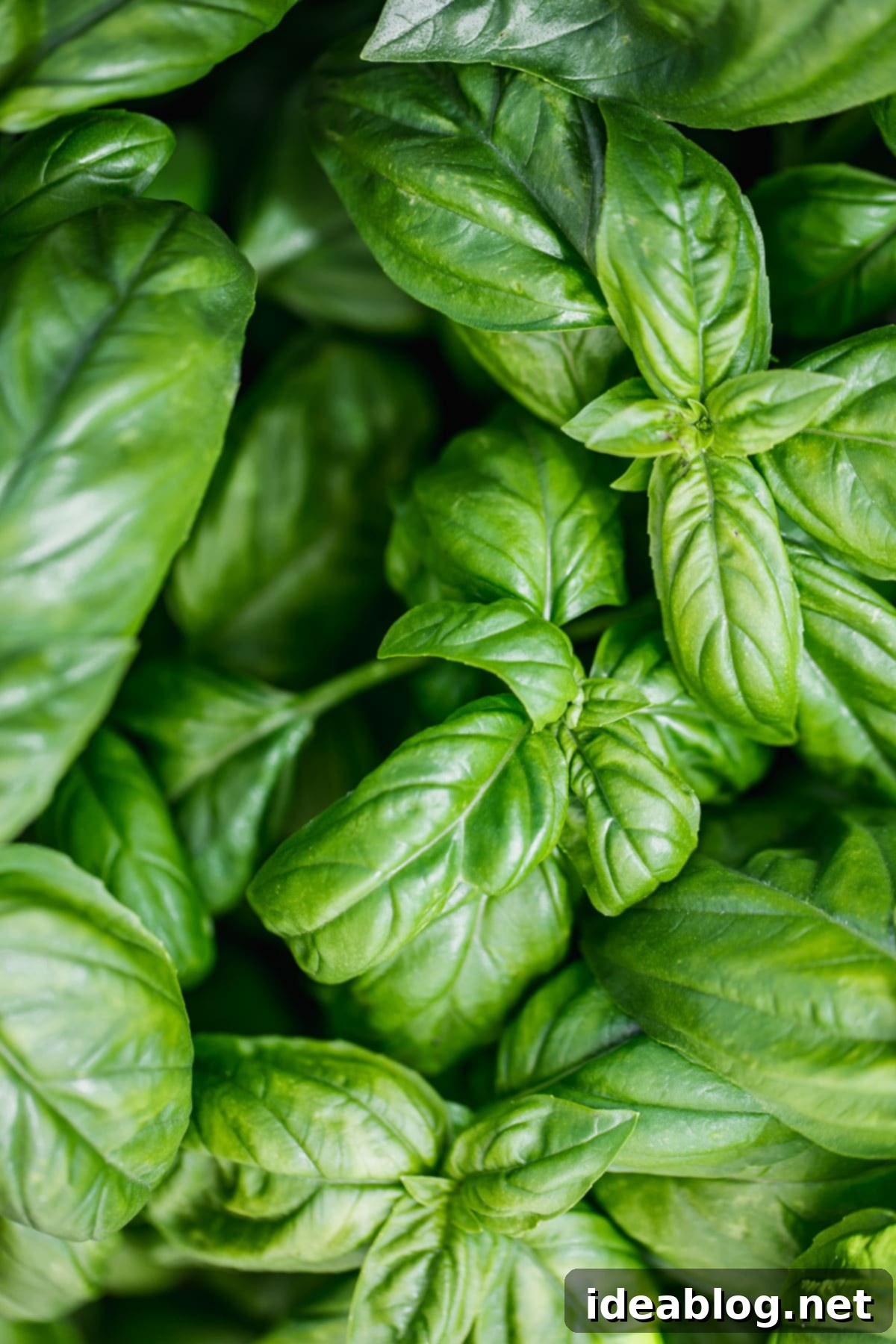Mastering Basil: A Comprehensive Guide to Growing Healthy, Flourishing Plants at Home
Unlock the secrets to cultivating abundant, vibrant basil plants right in your home garden. This comprehensive guide provides tried-and-tested tips for growing healthy, flourishing basil, ensuring you have a steady supply of fresh herbs year-round.
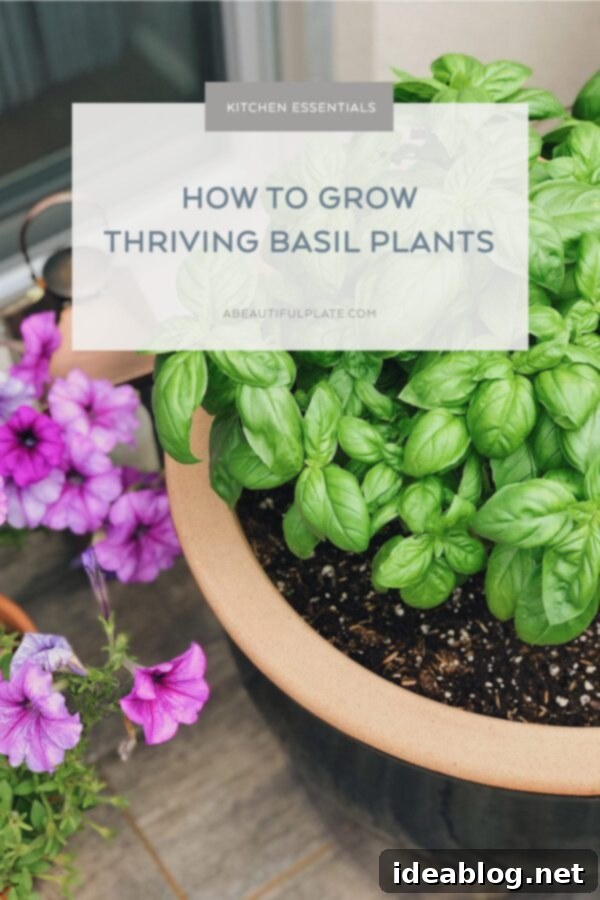
As the warmer months usher in the joy of fresh produce and vibrant flavors, there’s nothing quite like having a thriving herb garden at your fingertips. Among the most beloved and versatile herbs, basil stands out, offering its distinct aromatic essence to countless culinary creations. If you’ve ever dreamt of stepping into your garden or balcony and plucking fresh basil leaves for your pesto, caprese salad, or homemade pizza, you’re in the right place.
Last summer, I shared my journey of transforming from a serial basil plant killer to a proud grower of an exceptionally happy basil plant. The overwhelming response and questions I received on Instagram inspired me to compile this easy-to-reference resource. My past attempts at growing basil were, to put it mildly, disheartening. Plants rarely survived beyond a few weeks, yielding meager harvests that hardly justified the effort. But after moving to a new apartment, I decided to approach basil cultivation with a renewed strategy and commitment. I delved into research, learned from my mistakes, and implemented a few fundamental practices that made an astonishing difference. The result? My basil plant flourished spectacularly all summer long, proving that anyone can grow healthy, thriving basil with the right knowledge.
Growing basil at home offers an unparalleled convenience and a burst of flavor that store-bought herbs simply can’t match. Imagine the satisfaction of harvesting your own fresh basil whenever a recipe calls for it, or simply enjoying its vibrant green foliage and delightful fragrance. With just a few basic adjustments to your approach, you too can enjoy a continuous supply of this fantastic herb. Let’s dive into the tried-and-tested tips that will help your basil plants not just survive, but truly thrive.
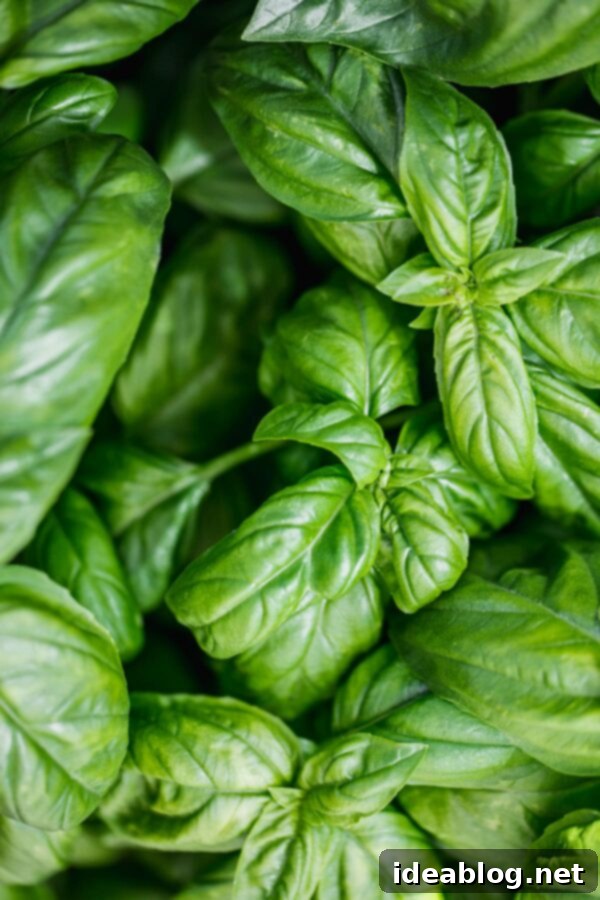
How to Grow Healthy, Flourishing Basil Plants
1. Start with Small, Bushy Plants
While it might seem counter-intuitive to bypass the larger, more established basil plants at the nursery, beginning with smaller, bushier specimens is actually one of the most critical steps for long-term success. Larger plants often appear tempting due to their immediate harvest potential, but they may have already undergone significant stress or improper harvesting, leading to an elongated, “leggy” growth habit. Leggy plants signal that the plant has stretched for light or hasn’t been pruned correctly, making it less robust in the long run.
Instead, look for basil plants that are relatively short, full, and have several well-formed branches. These characteristics indicate a healthy, vigorous young plant with a strong foundation, ready to establish itself in its new home. Smaller plants tend to adapt better to transplanting shock and will readily develop a strong root system, which is paramount for overall plant health and abundant leaf production. By starting small, you set your basil up for consistent, robust growth and a much longer, more productive lifespan.
2. Choose a Large Planter with Excellent Drainage
Basil plants are not fans of cramped quarters; they truly thrive in spacious environments. This is a lesson I’ve learned firsthand through multiple failed attempts with inadequate pot sizes. A larger planter offers numerous benefits crucial for healthy basil growth.
- Ample Root Space: Firstly, a generous pot size provides plenty of room for the roots to spread out and develop. A strong, unconstricted root system is essential for the plant to absorb nutrients and water efficiently, fueling vigorous leaf growth.
- Moisture Retention: Secondly, larger soil volumes retain moisture more effectively between waterings. Basil prefers consistently moist, but not soggy, soil. In small pots, the soil dries out rapidly, especially when exposed to direct sun, leading to a stressed plant that struggles to maintain hydration. A larger pot creates a more stable moisture environment, reducing the frequency of watering and preventing the drastic wet-to-dry cycles that basil dislikes.
- Preventing Root Rot: Crucially, ensure your chosen container has multiple drainage holes at the bottom. Good drainage is non-negotiable for basil, as it prevents water from pooling around the roots. Stagnant water deprives roots of oxygen, leading to root rot, a common killer of container-grown plants. Terra cotta pots are often recommended for their breathability, but any pot with sufficient drainage will work. Always use a high-quality potting mix that drains well and is specifically designed for container gardening, rather than heavy garden soil.
3. Harvest Regularly to Encourage New, Bushy Growth
This is undeniably the most impactful tip and the single biggest differentiator in growing a thriving basil plant. Many gardeners, myself included, often hesitate to harvest basil, wanting to “save up” for a large batch of pesto or a specific recipe. However, this mentality is counterproductive. The key to a healthy, flourishing, and continuously productive basil plant lies in consistent and proper harvesting.
Each time you properly harvest a basil stem, you’re not just taking leaves; you’re sending a signal to the plant to create two new branches from the “node” (the point where leaves meet the stem). This process, known as pinching, promotes lateral growth, resulting in a bushier plant with a greater number of stems and, consequently, a much higher yield of leaves. You can see a visual explanation of this technique in my video here.
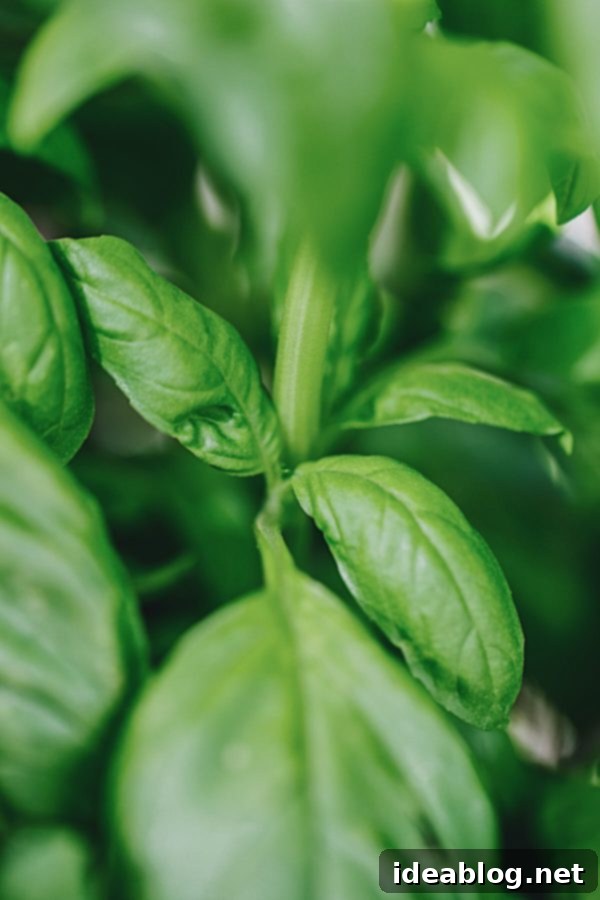
When harvesting basil, always trim roughly 1/2-inch above a new set of leaf growth (a node), as shown above.
Always make your cut just above a set of emerging leaves (the node), approximately 1/2-inch above this point, using sharp scissors or clean plant snips. I personally prefer to harvest just above the third node of each stem, encouraging two robust new branches to sprout from that spot. Regular harvesting also prevents the plant from “budding” or flowering. If you see small flower buds forming, pinch them off immediately. Budding signals the end of the basil plant’s vegetative growth cycle, shifting its energy from producing flavorful leaves to creating seeds. Allowing it to flower will result in fewer, smaller, and more bitter leaves. By diligently harvesting and pinching off any buds, you extend the life and productivity of your basil plant considerably.
4. Ensure Full Sun Exposure
Basil is a sun-worshipping plant, and providing it with ample sunlight is paramount for maximum growth and flavor development. For truly thriving basil plants, aim for a minimum of 6 to 8 hours of direct, full sun exposure each day. Sunlight is crucial for photosynthesis, the process by which plants convert light energy into chemical energy, leading to robust growth and the production of those essential aromatic oils that give basil its distinctive taste.
While basil can be grown indoors, it will rarely reach the same level of vigor or yield as plants grown outdoors under the natural intensity of the sun. If you’re growing indoors, place your basil in a south-facing window, or supplement with a grow light to ensure it receives enough light. For outdoor plants, choose the sunniest spot in your garden, patio, or balcony. Adequate sunlight is not just about growth; it’s also about intensifying the flavor and aroma of your basil leaves, making them perfect for all your culinary endeavors. Seek out the sun, and your basil will thank you with lush, fragrant foliage.
5. Feed Your Basil Every Few Weeks
This tip was a game-changer for me. In the past, I rarely considered feeding my herbs, assuming the soil would provide everything they needed. However, consistent watering and growth deplete soil nutrients over time, leaving plants struggling to thrive. Just as humans need nourishment, plants require essential nutrients to support their rapid growth and maintain health.
Introducing a regular feeding schedule can make an incredible difference. Not long after I started fertilizing, I noticed a dramatic improvement: the leaves became darker in color, larger, and significantly healthier looking. Depleted soil, regardless of how meticulously you water or harvest, will hinder your plant’s ability to flourish. Every few weeks, I give my basil plant a dose of this organic liquid fertilizer feed (affiliate link). It’s incredibly easy to use and provides the balanced nutrients basil needs for continuous, vigorous growth. Highly, highly recommended for anyone looking to boost their basil’s performance.
6. Water Consistently, But Avoid Overwatering
Beyond light and nutrients, proper watering is foundational to basil’s success. Basil plants prefer consistently moist soil, but they absolutely detest being waterlogged. The key is balance: never let the soil completely dry out, but also ensure it’s not constantly soggy, which can lead to root rot.
- Check the Soil: The best way to determine when to water is to feel the top inch or two of the soil. If it feels dry to the touch, it’s time to water.
- Thorough Watering: When you do water, do so thoroughly until water drains from the bottom of the pot. This ensures the entire root ball is hydrated.
- Avoid Wet Leaves: Try to water the soil directly rather than dousing the leaves, especially if watering in the evening, as prolonged moisture on leaves can encourage fungal diseases.
- Environmental Factors: Factors like temperature, humidity, and pot size will influence how often your basil needs water. During hot summer days, outdoor basil in large pots might need watering daily, while indoor plants or those in cooler weather may need it less frequently.
Common Challenges and Troubleshooting
Even with the best care, sometimes basil can face issues. Yellowing leaves often indicate overwatering (too much moisture, leading to root suffocation) or underwatering (not enough water). Leggy growth, as mentioned, is usually a sign of insufficient light. Pests like aphids can occasionally bother basil. If you spot them, a gentle spray of insecticidal soap or neem oil can help, or simply rinse them off with a strong stream of water. Ensuring good air circulation around your plant can also deter fungal issues. Remember, consistency in care is your best defense against most problems.
I genuinely hope these detailed tips empower you to grow the healthiest, most flavorful basil you’ve ever harvested. With a little attention to these practices, you’ll soon be enjoying an abundant supply of this fantastic herb. If you have any further questions or your own tried-and-true basil growing secrets, please share them in the comment section below!
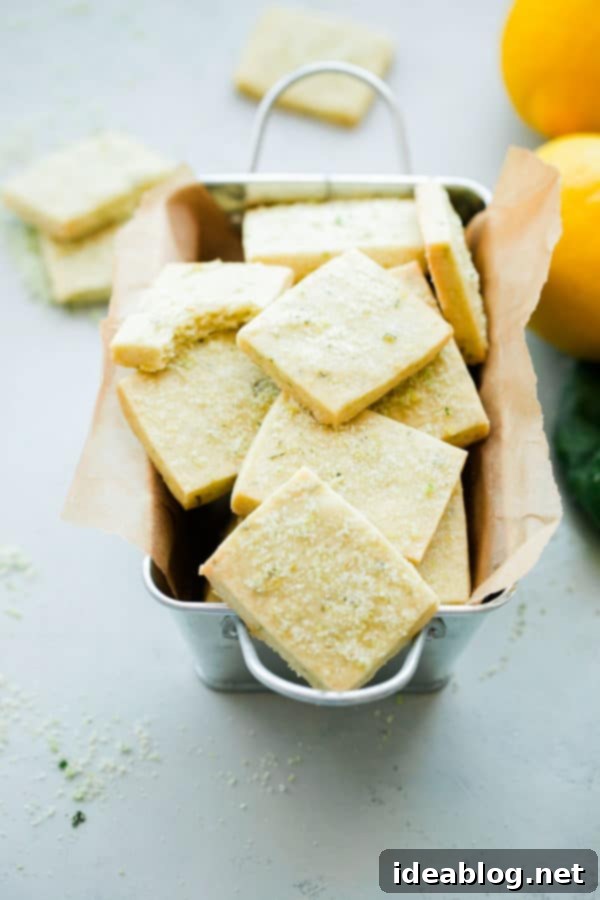
Creative Ways to Use Your Fresh Basil Harvest
Once your basil plant is flourishing, you’ll have an abundance of fresh leaves to incorporate into a myriad of dishes. Beyond traditional Italian cuisine, basil’s unique flavor profile lends itself to surprisingly diverse applications. Here are some delightful ideas to inspire your culinary adventures with homegrown basil:
- Lemon Basil Shortbread Cookies
- Basil Ice Cream
- Spaghettini with Roasted Tomatoes, Basil, and Garlic Breadcrumbs
- Beet, Peach, and Burrata Salad with Basil Oil and Candied Pistachios
- Homemade Gnocchi with Tomato Basil Sauce
